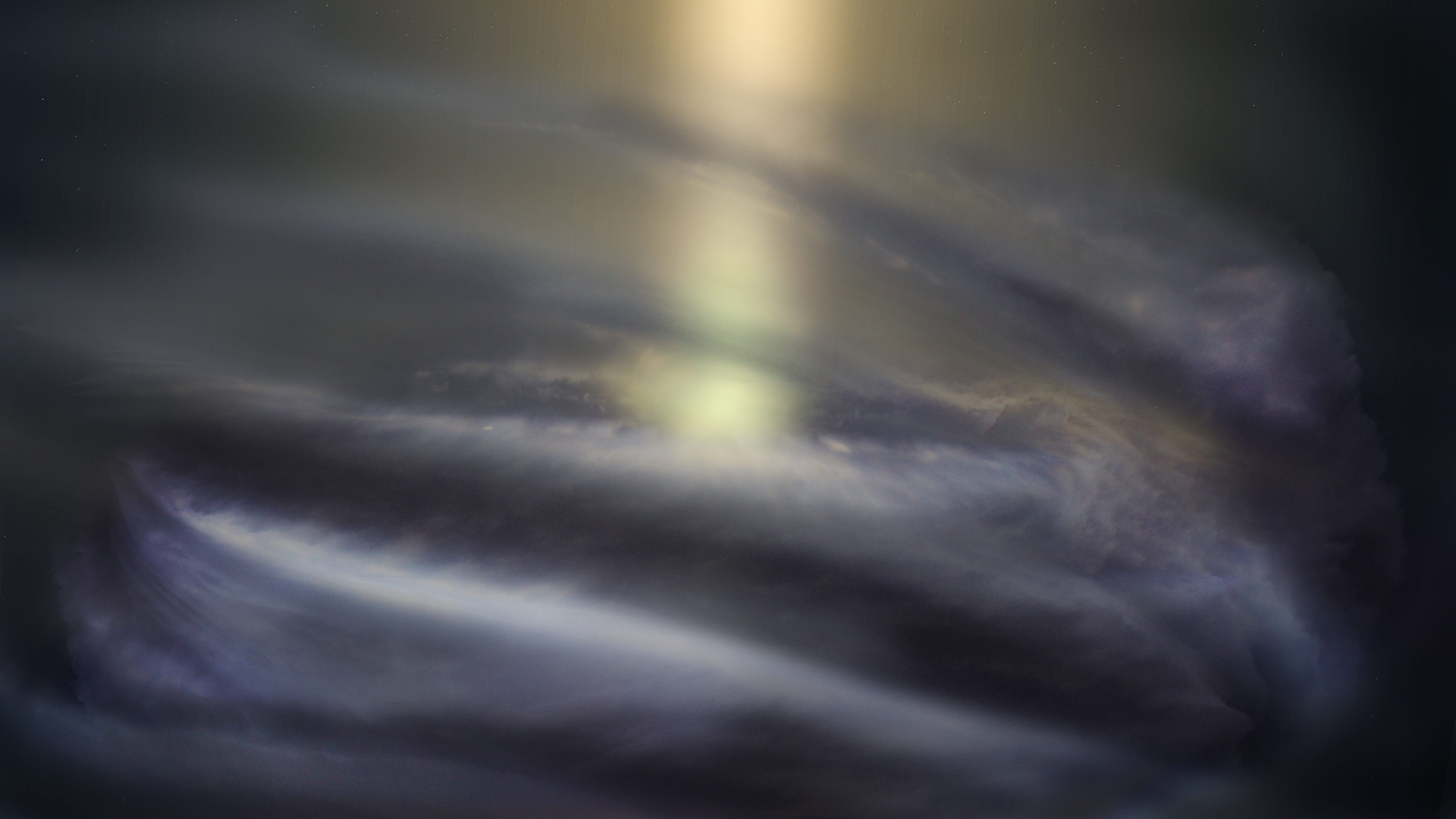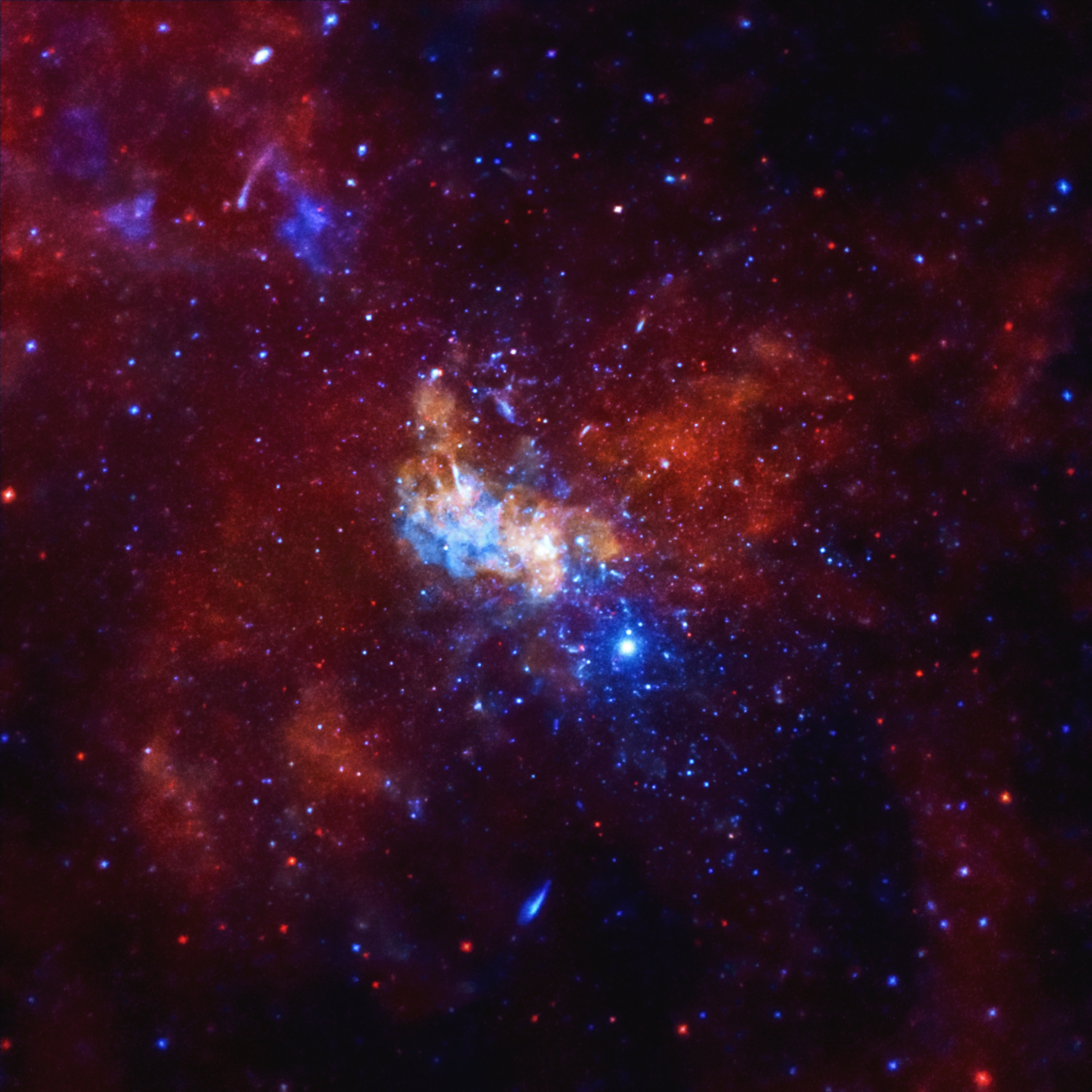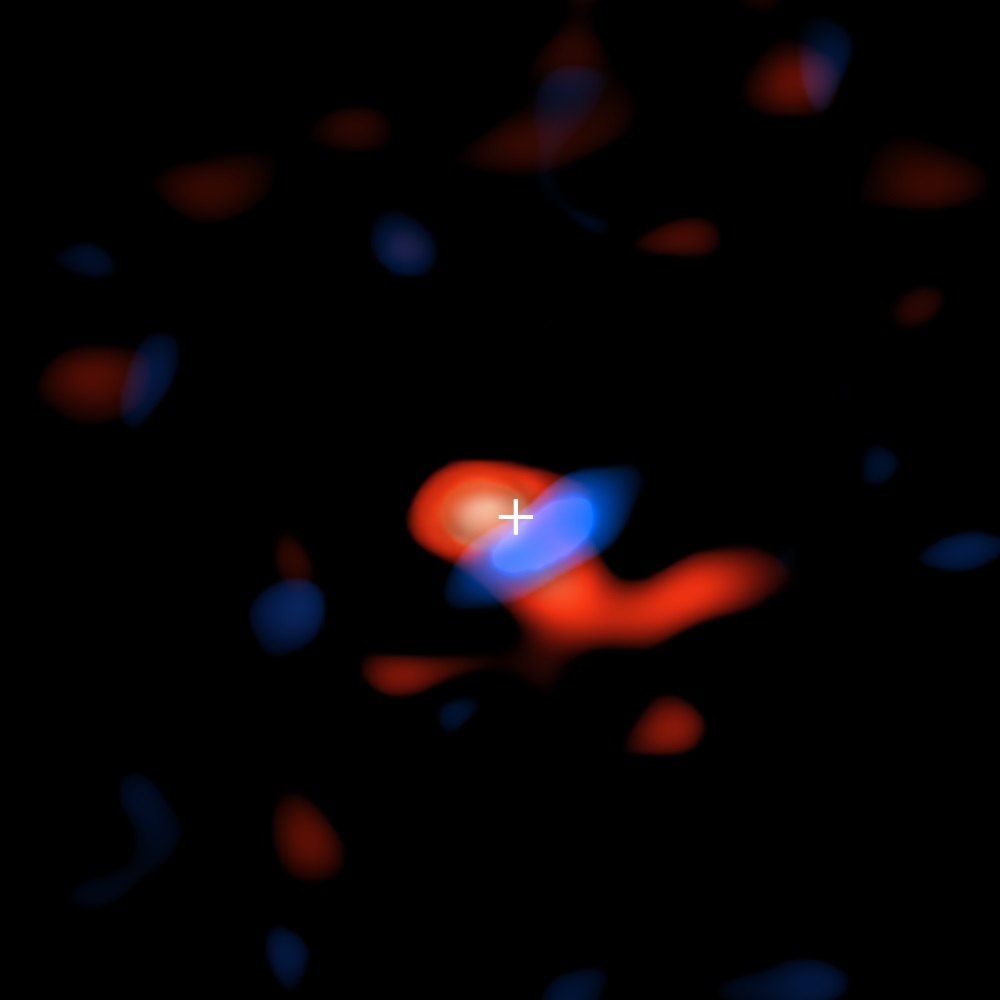The Milky Way's Monster Black Hole Has a Cool Gas Halo — Literally

For the first time, astronomers may have imaged the cool disk of gas surrounding the gigantic black hole at the heart of the Milky Way, a new study finds.
The research may improve knowledge about how black holes grow and influence their surroundings.
At the hearts of most, if not all, galaxies are supermassive black holes millions to billions of times the mass of the sun. These enormous structures can have profound effects on the galaxies they call home — for example, they can blast out jets of matter at nearly the speed of light that can travel across an entire galaxy, likely shaping the galaxy's evolution.
Related: The Strangest Black Holes in the Universe

At the center of our galaxy lies the supermassive black hole Sagittarius A*, often abbreviated Sgr A*. This giant is about 4 million times the mass of the sun and about 14.6 million miles (23.6 million kilometers) in diameter.
Around Sgr A* swirls a ring of debris known as an accretion disk. The gas within this disk experiences so much friction that it can reach 18 million degrees Fahrenheit (10 million degrees Celsius), according to researchers on the new study. Previous research has detected X-rays near Sgr A*, likely given off from this hot gas.
Prior research suggests that Sgr A* was also surrounded by relatively cool gas, with temperatures ranging from about minus 280 degrees F to 17,500 degrees F (minus 170 degrees C to 10,000 degrees C). However, it remains uncertain how much cool gas surrounded Sgr A*.
Get the Space.com Newsletter
Breaking space news, the latest updates on rocket launches, skywatching events and more!
"If we want to learn about what processes are important and not important for how a black hole gets fed, we need to know the environment around the black hole well," study lead author Elena Murchikova, an astrophysicist at the Institute for Advanced Study in Princeton, New Jersey, told Space.com. "But the contribution of cool gas on a black hole has never been studied."
Now Murchikova and her colleagues suggest that they may have imaged the cool accretion disk around Sgr A* for the first time. "This should help improve our understanding of how accretion onto black holes works," she said.
Scientists used the Atacama Large Millimeter/submillimeter Array (ALMA) in Chile to analyze the center of the Milky Way. Specifically, they focused on wavelengths of light given off by hot ionized hydrogen gas that could make it all the way from the heart of the galaxy to Earth, with very little loss of these light signals along the way.

The researchers detected a disk of cool gas about 20,000 times the diameter of Sgr A*, and estimated it was about one-tenth the mass of Jupiter, or about 30 times the mass of Earth.
Future research should aim for higher-resolution images of the cool gas around black holes, and how this gas interacts with hot gas around black holes, Murchikova said. "We want to find out as much of what is going on around a black hole as possible," she noted.
The scientists detailed their findings online June 5 in the journal Nature.
- Physicists Closer to Solving Mystery of Weird Glowing Ring Around Milky Way's Black Hole
- Milky Way's Monster Black Hole Belches Big, But Why?
- The Future of Black Hole Photography: What's Next for the Event Horizon Telescope
Follow Charles Q. Choi on Twitter @cqchoi. Follow us on Twitter @Spacedotcom and on Facebook.
Join our Space Forums to keep talking space on the latest missions, night sky and more! And if you have a news tip, correction or comment, let us know at: community@space.com.

Charles Q. Choi is a contributing writer for Space.com and Live Science. He covers all things human origins and astronomy as well as physics, animals and general science topics. Charles has a Master of Arts degree from the University of Missouri-Columbia, School of Journalism and a Bachelor of Arts degree from the University of South Florida. Charles has visited every continent on Earth, drinking rancid yak butter tea in Lhasa, snorkeling with sea lions in the Galapagos and even climbing an iceberg in Antarctica. Visit him at http://www.sciwriter.us









